How to conduct a Diary Study in Decode?
A diary study is a research approach where participants meticulously document their daily activities, thoughts, emotions, and experiences within a specified timeframe, typically using a journal or digital platform. This method enables researchers to gain profound insights into individual behaviours, attitudes, and patterns over time across various domains such as psychology, sociology, user experience, and market research.
How to conduct a Diary Study in Decode?
Step 1: Once you log in to your Decode account, you will arrive on the dashboard.
Step 2: On the left navigation panel, click on the “+” icon to open the research page.
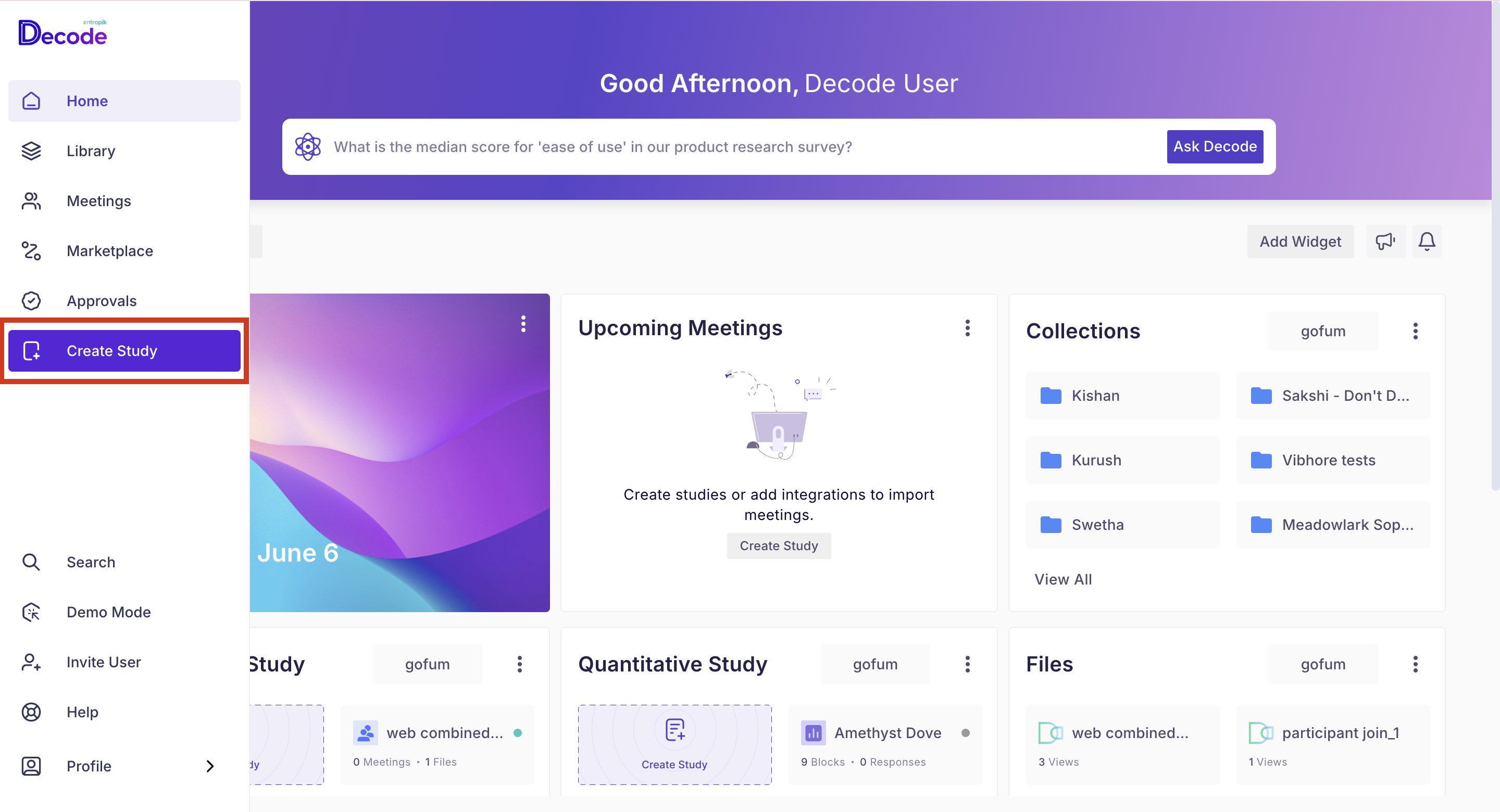
Step 3: On the Research page, from the left panel, expand the “Qualitative Study Templates” option by clicking on it and selecting the "Diary Study" option from the list.
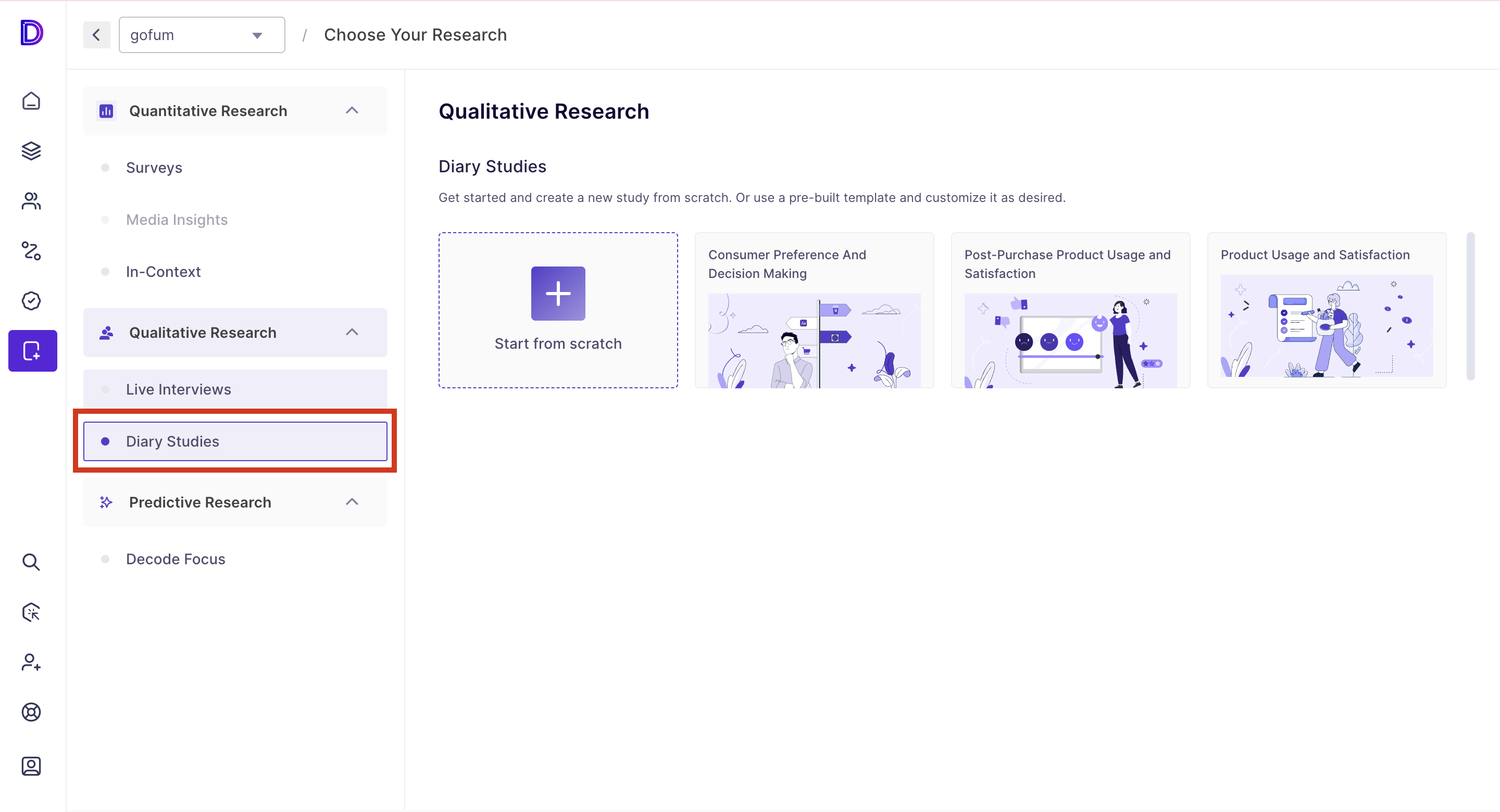
Step 4: Now, you can either start from scratch or use the pre-defined templates to initiate the study creation process.

Step 5: You will be redirected to the study's home page, which you can customize and use as an introduction page for your study.
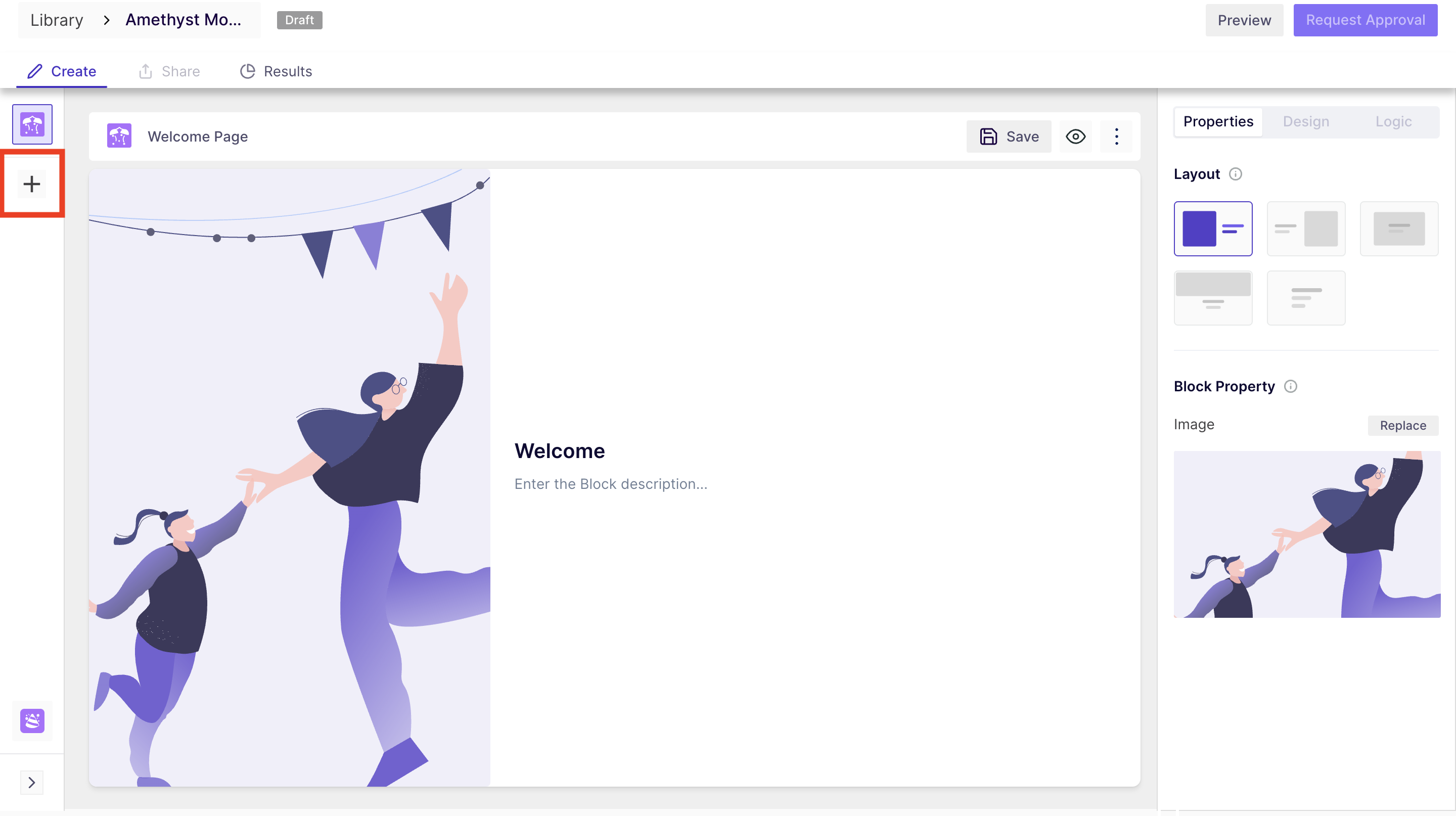
Step 6: Click on the “+Add new Block” from the navigation panel to add a new block. You can add the following block types in the diary study:

Video Block: Using this option, respondents can submit their responses in the video format, they can either record the video or they can upload an existing video.
Format: mp4, m4v
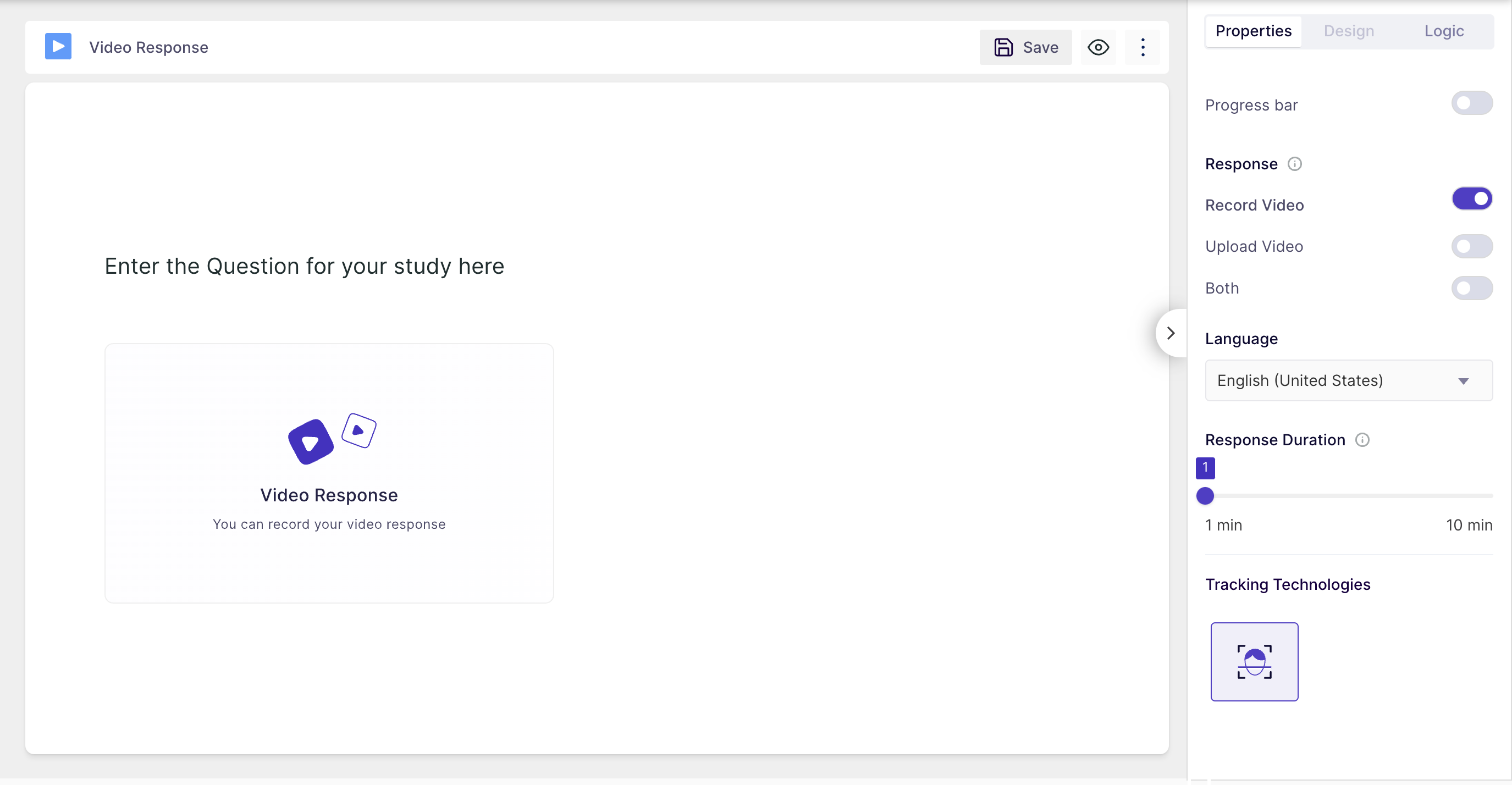
The Video Block captures not only video responses but also incorporates advanced features such as Facial Coding (FC) analysis, Voice Tonality, and Sentiment Analysis. Facial Coding (FC) analysis helps researchers understand the emotional expressions of participants as they engage with a product or service, offering valuable insights into their reactions.
Voice Block: Using this block, the respondents can submit their audio responses. In this block as well, they choose to record or upload any existing recording.
Format: wav. mp3
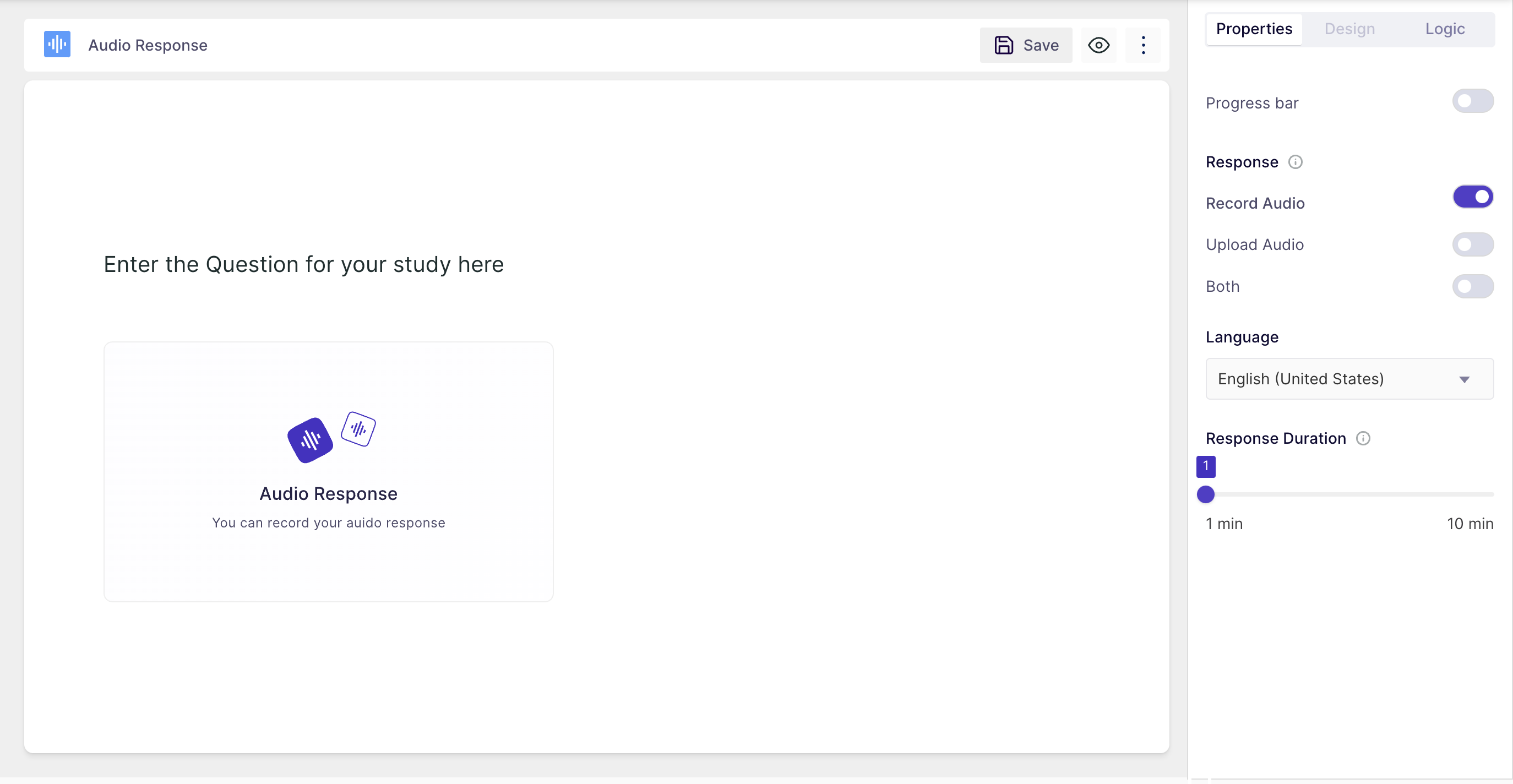
The Voice Block utilizes tonality and sentiment analysis to provide deeper insights into the captured voice responses. Similar to the Video Block, this feature helps you understand the emotional aspects of user feedback through voice recordings.
Image response: Allows participants to convey their thoughts, opinions, or experiences using visuals. In this block, they choose to capture or upload an existing image.
Format: Jpg, png.
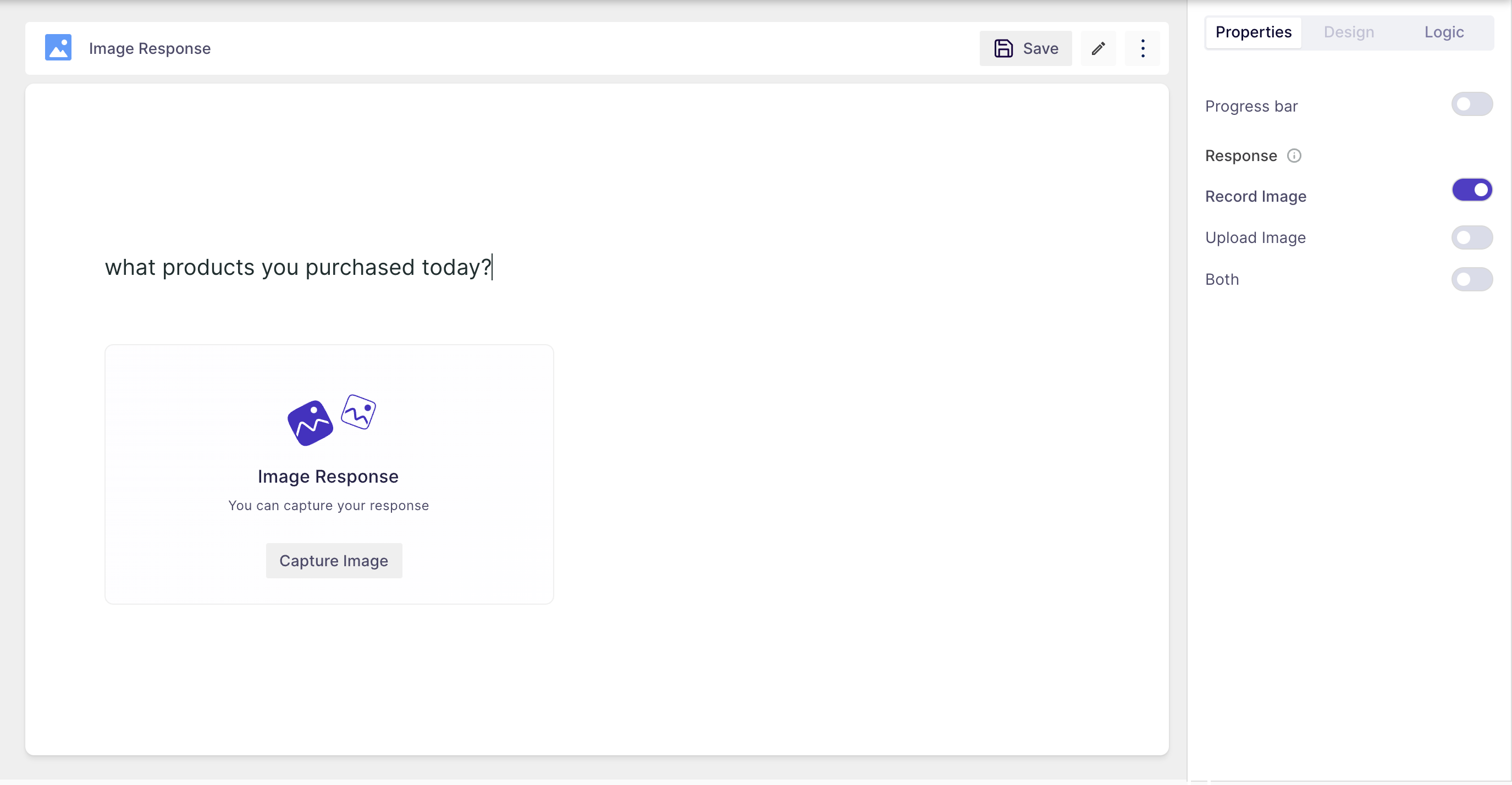
Survey Questions
Checkbox Responses: Checkbox responses are a type of survey question that allows participants to select multiple options from a predefined list. These responses are useful for collecting structured data and quantifying preferences.
Multiple-Choice Questions (MCQ): Multiple-choice questions present participants with a question and a list of answer options, with the task of selecting the most appropriate choice.
Paragraph Questions: Paragraph questions invite participants to provide detailed, open-ended responses in the form of written paragraphs. This format is valuable when researchers seek in-depth, qualitative feedback.
Step 7: Before publishing the study, you can preview the study by clicking on the "Preview" button at the top-right corner of the page.

Step 10: Click on the publish button to make the study live.

